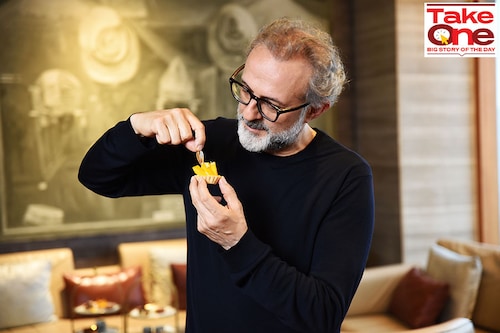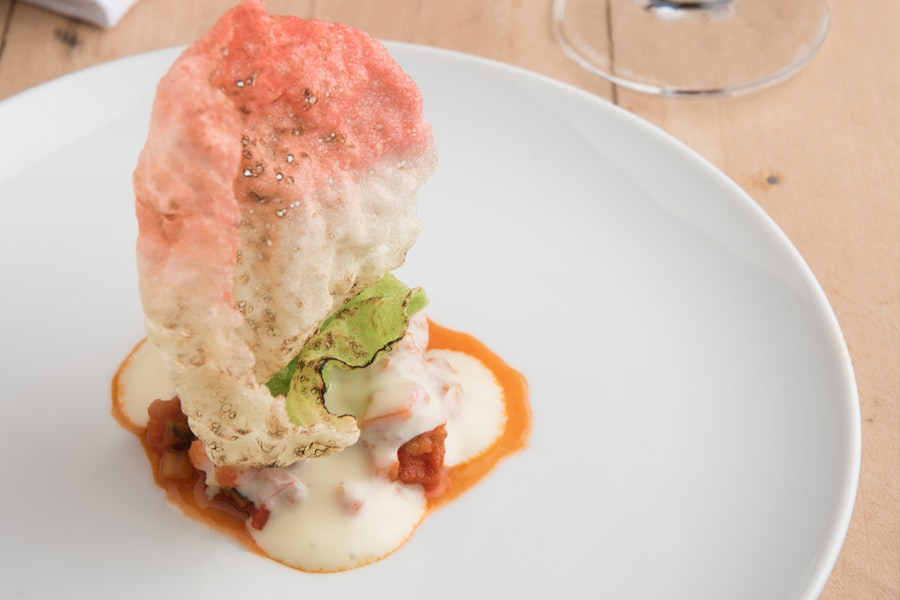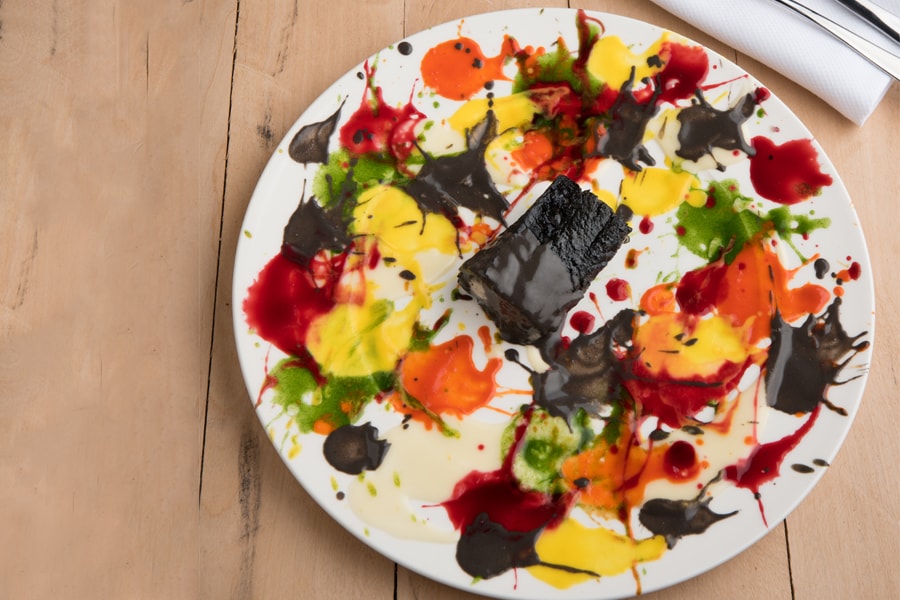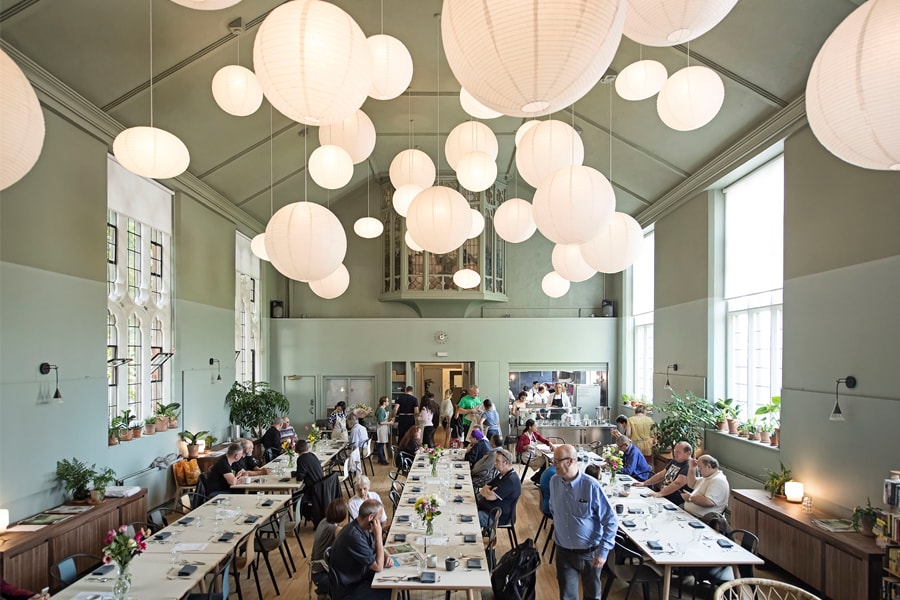Massimo Bottura: Chef with a cause
Among the world's most celebrated chefs, Massimo Bottura is using his passion for food to usher in conscious dining


A little while before we sat down for a chat, Massimo Bottura had eaten a hearty North Indian lunch, the kind that’s usually rounded off with an afternoon nap. Would he really like to go on with the interview instead, we ask? “Of course," he says.
Bottura is nearly 60, had landed in Mumbai the previous night, and was gearing up to cook back-to-back dinners in collaboration with Masters of Marriott Bonvoy and Culinary Culture over the next two days. But nothing, neither jet lag nor the searing April heat in the city, could rob him of his spunk and vigour.
“I’ve always had lots of energy," says the celebrated Italian chef. “When my mother had to persuade my father to not force me to study law, she told him, ‘You see how much energy Massimo has? It might be a problem if it’s not channelled in the right direction. Let him do what he wants to’." It must have been as convincing an argument as any, for Bottura senior, who was opposed to his culinary pursuits, finally relented. Bottura dropped out of law school soon after, and within one week, zeroed in on a restaurant on the outskirts of Modena, his hometown, to launch Trattoria del Campazzo.
That was 1986. Thirty-six years on, Bottura is recognised as one of the world’s foremost chefs. Osteria Francescana, the restaurant he started in Modena in 1995 (after stints in Monaco and the US, and selling off Trattoria del Campazzo), has been awarded three Michelin stars, the Holy Grail in the industry, and has consistently ranked among the top five in The World’s 50 Best Restaurants through much of the last decade. Twice, in 2016 and 2018, it bagged pole position, the first Italian restaurant to do so. A 12-course tasting menu here will set you back by 320 euros (over Rs 26,000), but that’s only if you can get in. Osteria Francescana has a six-month waiting list, with bookings in May fetching you a table only in November. The Mumbai seatings that had 60 guests each night were also sold within minutes despite a steep Rs 35,000+ price tag (guests for the first night had to make a donation to the Sharanam Centre for Girls in Dharavi).
But Bottura isn’t as voluble about his three Michelin stars, as he is about his fourth: The green star, which he calls the most important and is awarded to restaurants that “combine gastronomic excellence with eco-friendly commitments". It not only establishes him as a culinary powerhouse, but also underlines his commitment to sustainability and his crusade against food wastage.
 Bottura"s signature dish "The Crunchy Part of the Lasagna" Image: Culinary Culture
Bottura"s signature dish "The Crunchy Part of the Lasagna" Image: Culinary Culture
At the zero-waste kitchen that he runs in Osteria Francescana, Bottura has set an exercise for his stagiaire and commis: Preparing staff meals with leftovers from the daily lunch and dinner served to the guests. Which means the surplus or the unused ingredients of 56 meals (28 covers each for lunch and dinner) are to be creatively incorporated into 130 meals for 65 staff members.
“For one of the new items on the menu, Insalata di Mare [seafood salad], we cook mussels with a bit of white wine, and garlic and herbs, then take the mussels out and use the juice for the salad," he says, as he air-chops and air-mixes ingredients in his imaginary bowl. “What do we do with the mussels that don’t go into the salad? They are used for staff meals of rigatoni with mussels and potatoes, a classic combination in south Italy."
His quest for sustainable eating has also earned him a Webby (the Oscars of the internet) in 2020, for his informal Instagram cooking tutorial, Kitchen Quarantine (KQ), at a time Italy was reeling under a Covid wave and Bottura was stuck in his house for 79 days. With a four-member crew that included wife Lara Gilmore, son Charlie (often in pyjamas), and daughter Alexa behind her iPhone camera, he taught viewers worldwide how to rustle up family meals—from Japanese-style soups to mac and cheese, steak with veggies, and everything in between—in Covid-induced captivity and with limited available ingredients.
“KQ was a way to connect with the world and tell them how to spend less, how not to waste, how to clean the refrigerator and make a dinner of leftovers with the family every Sunday. There are companies that invest millions for this, but we won the award with my daughter and an iPhone," says Bottura. “Can you imagine," his eyes light up, “even Hollywood stars like Bradley Cooper, Brad Pitt and Gwenyth Paltrow were following us?"
KQ is perhaps a logical extension of Bottura’s mission to foster equitable gastronomy. In 2016, he and Gilmore started Food For Soul, a non-profit to promote social awareness about hunger and food wastage. Through the organisation, they have launched a global movement of refettorios–community spaces that serve the underprivileged meals prepared with surplus ingredients that would otherwise have been thrown away. “I want to be known as much for Osteria Francescana as much for these refettorios," says Bottura. “You cook for your staff, you cook for a refettorio, you cook for a three-Michelin star restaurant, it’s all the same. Cooking is not a job for me, it’s something I love."
 Beautiful, psychedelic, spin painted cod, charcoal grilledImage: Culinary Culture
Beautiful, psychedelic, spin painted cod, charcoal grilledImage: Culinary Culture
The refettorios began as a pop-up during the Milan World Expo in 2015, and even Gilmore had her doubts initially. “Even Lara told me I was going to open myself up to critics. I said, who cares," says Bottura. He and Gilmore now run 14 refettorios around the world, saving 670 tonnes of food from being burnt, and dishing out over 1.53 million meals. “We have precious time to use. You can either complain, or you can invest in the future."
Chef and food writer Akanksha Dean, the first ever Indian intern at Osteria Francescana in 2017, recalls how ingredients would be portioned out for the lunch and dinner menus to eliminate wastage. “Since the restaurant was booked out and we knew how many meals were to be served, there would be minimal wastage. If anything was to be disposed of still, it would go to the refettorios."
Through such initiatives, Bottura believes, comes sustainability, around which a lot of conversations have opened up of late. “The pandemic has defined this for us," he says. “Restaurants that didn’t manage their resources in a sustainable way disappeared."
“But we," adds Bottura, “have emerged stronger through this pandemic. We now have four restaurants, and have 150 people working for us instead of the earlier 100. In the last two years, we opened two new outposts of Gucci Osteria da Massimo Bottura [a collaboration between the two brands that opened its first restaurant in Florence in 2018], in Seoul and Tokyo."
Bucking tradition was in Bottura’s DNA right from the time he opened Osteria Francescana. At that time, Italian cuisine was defined by its heritage and every Italian believed that the best food was to be had at home—Bottura’s own initiation to cooking also came from hiding under the kitchen table, stealing pasta, tasting ragu, rolling a tortellino with his mum and grand mum, what have you.
 Refettorio Felix in West LondonImage: Simon Owen / Red Photographic
Refettorio Felix in West LondonImage: Simon Owen / Red Photographic
Why would an average Italian then head to Osteria Francescana where the chef was ostensibly re-interpreting tradition? Only six pieces of tortellini lined up on a thin layer of broth (‘Tortellini Walking Into Broth’) was sacrilege for a diner used to heaps dunked in a bowl of liquid.
Bottura’s restaurant received brickbats for a few years after its launch—footfalls were barely a trickle. “People didn’t understand what I was doing. One day, the local newspaper carried a review and the critic closed the article by saying please don’t go there," he says. The thought of shutting down did cross his mind, but Gilmore kept him going, as did the picture of how his mother had to convince his father. “I did not want him telling my mum, ‘See, I was right’."
In 2001, one of Italy’s top food critics, caught up in traffic en route from Rome to Milan, stopped in Modena and dined at Bottura’s restaurant. A glowing review followed, and in November the first Michelin star. The rest, as they say, is history. “It’s a lesson to the younger generation that they should keep fighting for their ideas," says Bottura.
“I looked at the past of Italian food with a critic’s eye and brought the best of the past to the future," he further says. His ‘The Crunchy Part of the Lasagna’ is a throwback to his favourite corner bits of the pasta dish as a child, but has a contemporary take with a combination of parmigiano crackers and pasta pieces on a bed of ragu, bechamel foam and tomato terrine.
“An art gallerist had told me that if you keep provoking the locals you’ll never gonna go inside their homes. But they’ll listen to you if you show them you cook better than their grandmother," says Bottura. His tagliatelle ragu follows all the tricks of handmade pasta with Bolognese sauce that his mother and grandmother taught him—hand-chopped, with a variety of meat thrown in, adding prosciutto, parmesan and mortadella but cooking them separately, never boiling the pasta in the sauce but only mixing it—but elevates it by a few notches. “I was getting the best ingredients, but not using fat but bone marrow to give it all the creaminess. I was cooking the tagliatelle in the water of the parmigiano, letting the pasta absorb the flavour," he says.
“What stands out for me is Massimo’s creativity and thought-provoking cooking in a cuisine culture that doesn’t necessarily celebrate that," says Alex Sanchez, chef-partner at Mumbai restaurant Americano, who dined at Osteria Francescana during a recent European holiday. “He exudes tremendous passion for this region, but not just through a standard tortellini or ragu."
Sanchez recalls a ravioli he ate that looked like mortadella, a specialty cured meat of the region, or a dessert that played on carbonara, a savoury pasta sauce. “Carbonara is typically made of cured pork with eggs, pecorino cheese and black pepper. The dessert he made had a pecorino ice-cream, an egg mousse, and came in a cone that had caviar and guanciale," says Sanchez. “As a chef, you want to be surprised and stumped a little, but also want your flavours and seasoning on point. Massimo ticks all the boxes."
Bottura draws inspiration from the wide cultural palate around him. In the year that he spent in the US in the ’90s, Gilmore broadened his vistas beyond just food and opened his eyes to contemporary art, which he replicates on plate. In the Venice Biennale in 1997, Bottura was taken aback by the ‘Turisti’ (The Tourist), an audacious art installation by Maurizio Cattelan that had taxidermied pigeons on the rafters, with droppings painted below. “It was so provocative. I found it incredible how he was breaking tradition to build new tradition. And I wanted to do that in the kitchen," says Bottura.
Dean, who trained with him in 2017, recalls how Bottura, otherwise a fun chef who would often play soccer during breaks, would immerse himself in work, especially while plating a dish. “There had to be pin-drop silence in the kitchen then, just like an artist working on his art," she says. Out of his fondness for art emerged one of Bottura’s most famous dishes—Oops I Dropped the Lemon Tart, patterned after a smashed tart his sous chef, Takahiko Kondo, had spilled by mistake.
“The most important ingredient to cook with is culture—if you have culture, you can express yourself. And the second is my palate, and that’s in my mind," says Bottura. “One hour ago, during my lunch, I was cooking with my mental palate. I was imagining serving naan at the restaurant in Maria Luigia, my hotel near Osteria Francescana, but in a totally different way."
And if there’s one thing that Bottura doesn’t want to compromise on, it’s his palate. If the diners dictate to the chef what’s on the plate, he says, it shows the chef has no personality. Says Bottura: “Renowned French chef Alaine Ducasse, with whom I worked for a year, tore up my notes after six-seven months, and told me you don’t need those, you have an incredible palate. So did Jiro San, considered to be the greatest sushi master of our times."
With plaudits pouring in from around the world, is there anything left for Bottura to achieve? “Of course," he says. “One refettorio after another, one project after another. In my future, there is always another future. I was born like that."
First Published: Apr 29, 2022, 14:46
Subscribe Now